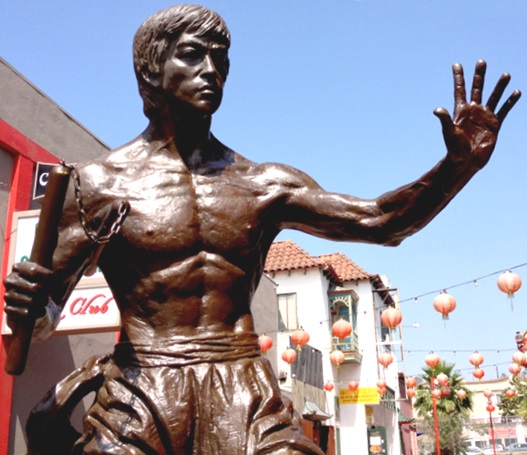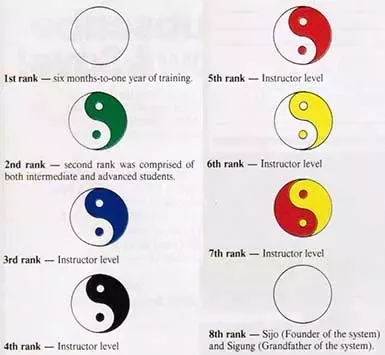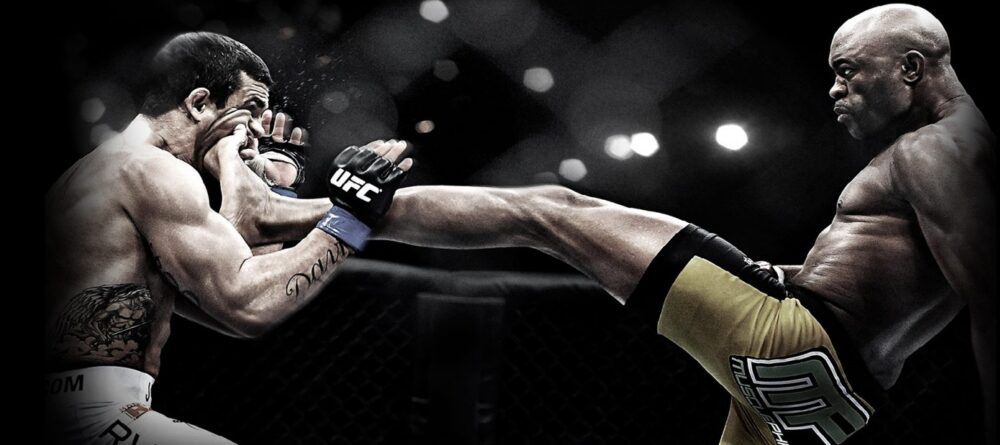It’s no secret that Bruce Lee was one of the most influential martial artists of all time. Bruce Lee’s fighting style is known as Jeet Kune Do and it is still used by top fighters today.
In this article, we’ll learn about the origins of Jeet Kune Do and explore some of the key principles behind Bruce Lee’s teachings.
We’ll also take a look at some of Bruce Lee’s most famous fights and see how his style influenced modern-day fighters.
Who was Bruce Lee?
Bruce Lee was an internationally renowned martial artist, actor, and philosopher. He is widely considered one of the greatest martial artists of all time and is widely credited with helping to bring martial arts to the mainstream.
He is also recognized for his role in the creation of Jeet Kune Do, a hybrid form of martial arts that incorporates different combat disciplines.
Bruce Lee was born in San Francisco in 1940 but his family moved back to Hong Kong shortly after his birth – and that’s where he was raised.
His introduction to martial arts was through his first teacher Ip Man, who taught him Wing Chun. It’s said that he went on to learn Western Boxing and Western Fencing.
What was Bruce Lee’s fighting style?
Bruce Lee’s fighting style was based on a philosophy of Jeet Kune Do, which is an amalgamation of various martial arts disciplines.
Lee invested Jeet Kune Do by combining these disciplines into a unique system that he termed “flow” – a state of complete immersion and concentration in the task at hand.
He believed that when an individual was in flow, they were free from the distractions of the outside world and could focus completely on the fight.
This is why his style was so effective – it allowed him to take advantage of his opponent’s weaknesses.
Is Jeet Kune Do effective?
Jeet Kune Do is a martial art that is designed to be effective in fighting. Keep in mind that Jeet Kune Do is a mixture of multiple combat styles rolled in one.
It is liken to the mixed martial arts of today. Keet Kune Do does not have a prescribed fighting system. The focus is to anticipate, intercept, and use your skill to counter without hesitation.
By training and practicing you can develop their skills to the fullest. There are many techniques and strategies included in Jeet Kune Do which are designed to help you defeat your opponent.
By practicing you can increase your chances of winning in a competition or in a real life street fight.
Deadliest Brazilian Jiu-Jitsu Submissions
.
Is Jeet Kune Do Still Taught?
Despite mix martial arts and Brazilian Jiu-Jitsu being the most popular forms of self defense today, Jeet Kune Do is being taught.
You can search online and find popular search terms like Jeet Kune Do near me or Jeet Kune Do schools. People want to learn about the philosophies and principles about the art, and this maintains it’s reputation across the world.
The World JKD Federation
The World JKD Federation (World Jeet Kune Do) is the world’s largest association of full-time JKD teachers, athletes, and trainers.
Their mission is to promote the sport and show support to the growth and development of Jeet Kune Do worldwide.
They provide resources, training, and support to their members worldwide, and work to raise awareness of JKD through educational events, media appearances, and partnerships with other organizations.

Where is the Bruce Lee Statue?
The Bruce Lee statue is located in Sun Mun Way, Los Angeles. This location is also known as Chinatown.
It is a bronze statue that stands seven feet tall and depicts Bruce Lee holding nun-chucks.
It was first unveiled on June 15, 2013 and permanently installed on a commemorative pedestal, and unveiled on September 28, 2018 at a ceremony attended by his daughter Shannon Lee.
Is there a statue of Bruce Lee in San Francisco?
Although San Francisco is the birth place of Bruce Lee, there isn’t a statue of him there. However, on February 5, 2022 San Francisco’s Chinese Historical Society of America Museum debut an exhibit dedicated to the life of Bruce Lee.
The only reason why the statue of him is in Los Angeles and not San Francisco, is because he build a martial arts school there while filming the television series called “The Green Hornet.”
Movies Bruce Lee stared in
- Enter The Dragon
- The Way of the Dragon
- Fist of Fury
- The Big Boss
- Fist of Unicorn
- Fury of the Dragon
- Game of Death
- Fist of Death, Tough of Fear
- Ninja Strikes Back

Does Jeet Kune Do Have Belts?
Bruce Lee did not create a belt ranking system. When he created Jeet Kune Do there were no belts.
He instead gave out certificates only to a handful of students that he personal trained. According to Dan Inosanto, one if his main students, Bruce Lee’s graduating certificate ranks had two levels.
- Level 1 – Senior 1 and Junior 1.
- Level 2 – Junior 1 and Senior
Keep in mind that this is basic. He passed away before he could really develop his certificate ranking system to it’s fullest potential.
When Bruce taught JKD there were no belts or even uniforms. This is because Jeet Kune Do didn’t follow traditional martial arts systems. It was mainly taught for street fighting.
In today’s world some who have carried on teaching the tradition of Jeet Kune Do have given it a belt ranking system. Again, some but not all.
Here is the Jeet Kune Do modern day belt system
1st Rank – White belt. Six month to one year of training.
2nd Rank – White and green belt. Both beginner and intermediate students.
3rd Rank -White and green belt. Instructor level.
4rth Rank – White and black belt. Instructor level.
5th Rank – White and red belt. Instructor level.
6th Rank – White and yellow belt. Instructor level.
7th Rank – Red and yellow belt. instructor level.
8th Rank – White. Sijo (Founder of the system) and Sigun (Grandfather of the system)
This belt system is not used by every dojo. A belt system was never intended for Jeet Kune Do. That’s not what Bruce Lee wanted.
Does Jeet Kune Do have grappling?
Yes, Jeet Kune Do does have grappling. According to Larry Hartsell, a person who was taught Jeet Kune do under Bruce Lee, Jeet Kune do always had grappling.
Bruce Lee learned grappling from infamous wrestler and judo master Gene LeBell and Jiu-Jitsu master Wally Jay. He implemented pieces of it into Jeet Kune do.
Before Bruce Lee died he added 33 grappling techniques to Jeet Kune Do. you can find his grappling techniques in his book called Tao of Jeet Kune Do.
Conclusion
In summary, Bruce Lee’s fighting style was Jeet Kune Do. This was a fighting style that he created because he wanted people to move away from the martial arts system mentality.
The martial arts system didn’t allow you to flow or think freely while doing martial arts. It had you confined to a martial arts system and he believed that it limited you as a practitioner.
The Jeet Kune Do philosophy and fighting style has no belts and no uniforms, although some modern gyms have added their own belt and uniform system.
This is entirely up to them but it does not represent the original Jeet Kune Do way. If you want to learn more about Jeet Kune Do – its fighting style and philosophies – please read the book below.
TAO of JEET KUNE DO
Compiled from Bruce Lee’s notes and essays and originally published in 1975, this iconic volume is one of the seminal martial arts guides of its time.
The science and philosophy behind the fighting system Lee pioneered himself—jeet kune do—is explained in detail, depicted through hundreds of Lee’s own illustrations.
With the collaboration of Lee’s daughter, Shannon, and Bruce Lee Enterprises, this new edition is expanded, updated, and remastered, covering topics such as Zen and enlightenment, kicking, striking, grappling, and footwork.
Featuring an introduction by Linda Lee, this is essential reading for any practitioner, offering a brief glimpse into the mind of one of the world’s greatest martial artists.

Click The Image Above
